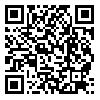Volume 3, Issue 1 (january 2019)
AOH 2019, 3(1): 259-267 |
Back to browse issues page
Download citation:
BibTeX | RIS | EndNote | Medlars | ProCite | Reference Manager | RefWorks
Send citation to:



BibTeX | RIS | EndNote | Medlars | ProCite | Reference Manager | RefWorks
Send citation to:
Siahi Ahangar A, Ghanbari S, Hajibabaei M, Saremi M, Azadi N, Jahani F, et al . Inter-Rater Reliability of Ergonomic Risk Assessment Methods . AOH 2019; 3 (1) :259-267
URL: http://aoh.ssu.ac.ir/article-1-117-en.html
URL: http://aoh.ssu.ac.ir/article-1-117-en.html
Atefeh Siahi Ahangar1 

 , Sahebeh Ghanbari2
, Sahebeh Ghanbari2 
 , Majid Hajibabaei *3
, Majid Hajibabaei *3 

 , Mahnaz Saremi4
, Mahnaz Saremi4 
 , Narges Azadi1
, Narges Azadi1 
 , Fereshteh Jahani1
, Fereshteh Jahani1 
 , Sanaz Karim Pour1
, Sanaz Karim Pour1 
 , Moslem Abedini1
, Moslem Abedini1 
 , Hassan Mohammadpour5
, Hassan Mohammadpour5 



 , Sahebeh Ghanbari2
, Sahebeh Ghanbari2 
 , Majid Hajibabaei *3
, Majid Hajibabaei *3 

 , Mahnaz Saremi4
, Mahnaz Saremi4 
 , Narges Azadi1
, Narges Azadi1 
 , Fereshteh Jahani1
, Fereshteh Jahani1 
 , Sanaz Karim Pour1
, Sanaz Karim Pour1 
 , Moslem Abedini1
, Moslem Abedini1 
 , Hassan Mohammadpour5
, Hassan Mohammadpour5 

1- MSc of Occupational Hygiene, School of Health , Students Research Committee, Ahvaz Jundishapur University of Medical Sciences, Ahvaz, Iran
2- health products safety research center, Qazvine university of medical science , Qazvine, Iran
3- PhD student of Occupational Hygiene, Department of Occupational Health Engineering, Students Research Committee, School of Public Health and safety, Shahid Beheshti University of Medical Sciences, Tehran, Iran ,mhajibabaei2050@sbmu.ac.ir
4- Assistant professor, Department of Ergonomics, School of Public Health and safety, Shahid Beheshti University of Medical Science, Tehran, Iran
5- MSC of Occupational Hygiene, Department of Occupational Health Engineering, Students Research Committee, School of Public Health and safety, Shahid Beheshti University of Medical Sciences, Tehran, Iran
2- health products safety research center, Qazvine university of medical science , Qazvine, Iran
3- PhD student of Occupational Hygiene, Department of Occupational Health Engineering, Students Research Committee, School of Public Health and safety, Shahid Beheshti University of Medical Sciences, Tehran, Iran ,
4- Assistant professor, Department of Ergonomics, School of Public Health and safety, Shahid Beheshti University of Medical Science, Tehran, Iran
5- MSC of Occupational Hygiene, Department of Occupational Health Engineering, Students Research Committee, School of Public Health and safety, Shahid Beheshti University of Medical Sciences, Tehran, Iran
Abstract: (3450 Views)
Background: Musculoskeletal disorders are one of the most common occupational diseases, and in recent years, several methods have been developed to evaluate risk factors for these types of disorders. Methods: In this cross-sectional study, 40 tasks in small industries including carpentry, turning, welding, loading and unloading, and sewing were recorded with a video camera and in the second stage, the postures were reviewed and evaluated by six raters. In total, forty of the worst and most frequent postures were analyzed by self-raters and then, the same risk levels were determined for the six methods and analyzed with correlation and Kappa agreement coefficient tests using SPSS (version 19), and then they were compared with each other using the Intraclass correlation coefficient (ICC). Results: The results revealed the importance of Kappa Coefficient in which it shows the risk level of different method and specified pair method: OCRA/SI =0.25, OCRA/HAL=0.2, SI/HAL= 0.32, SI/ RULA= 0.33, REBA/OCRA = 0.4, QEC/SI= 0.27, QEC/ RULA= 0.23Inter-rater Reliability of the methods was found as follow:ICCOCRA=0.3, ICCSI= 0.67, ICCHAL= 0.8, ICCRULA= 0.85, ICCREBA=0.8, ICCQEC=0.972.Conclusions: The results showed that there was no complete agreement among the methods. This agreement among methods is evaluated from poor to good (0.2-0.4). The ICC showed high reliability in the methods except in the OCRA method.
Send email to the article author
| Rights and permissions | |
 |
This work is licensed under a Creative Commons Attribution-NonCommercial 4.0 International License. |




